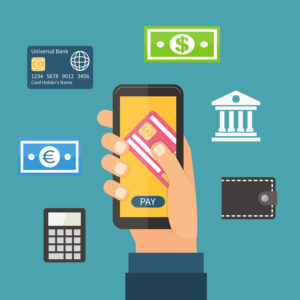EFT Bank Transfer
Understanding Electronic Funds Transfer (EFT)
Electronic Funds Transfer (EFT), also known as direct deposit, refers to the electronic transfer of funds from one bank account to another. Unlike traditional bank transactions, EFTs do not require the involvement of bank personnel and are conducted digitally. This means that there is no need for paper documentation. EFT has gained popularity as a preferred method of transferring money due to its simplicity, convenience, and directness. As businesses continue to adopt EFT, traditional paper checks are becoming increasingly irrelevant due to their high costs, slower processing times, and greater administrative burden.
How Does Electronic Fund Transfer (EFT) Work?
Electronic Fund Transfer (EFT) is a simple and efficient process. It involves two parties: the sender and the receiver of funds. The sender initiates the transfer, and the request passes through a series of digital networks, starting from either the internet or a payment terminal, and then through the sender’s bank and finally, to the receiver’s bank. The sender could be anyone, such as an employer, business, or individual paying for a service like electricity, while the receiver could be entities like employees, goods suppliers, retailers, and utility companies. Most payments are cleared within a few days, after which the transaction is complete.
Different Types of Electronic Fund Transfer (EFT) Payments
Electronic Fund Transfer (EFT) payments come in different forms, all of which offer ease and fast delivery, making them popular worldwide. To fully take advantage of EFT, it’s essential to understand the various payment methods available. Here are the most common types of EFT payments:
Electronic Checks
This involves generating a digital check upon the payer’s authorization. E-checks are commonly used for vendor payments.
Direct Deposit
With direct deposit, funds are automatically deposited into an account with minimal paperwork. This method is popular among employees, but setting up the deposit requires bank account information for the recipient, among other details.
Phone Payments
This is a casual transaction that occurs during a phone call, where the payee provides their information, typically a card number, to the recipient. The transaction happens on the recipient’s line, and the payee does very little after verbal authorization. This method is commonly used for utility payments.

ATM Transactions
ATM transactions occur at electronic kiosks found in cities and banks worldwide. A person withdraws cash from their bank account by inserting their debit card into the machine, which then transmits information to the bank and processes the request to dispense money. This is an instant transaction.
Card-Based Payments
Card-based payments are the most commonly used form of payment globally during the point of sale phase of a transaction, replacing cash. This can occur in person or online and involves swiping, dipping, or entering a credit or debit card. During this process, account information is electronically received, and payment withdrawal is approved, with payment scheduled and processed within a day or two.

Internet-Based Payments
The internet version of card-based payments involves manual entry into a point-of-sale field, followed by clicking a payment button. This process is similar to in-person card transactions, where an approval for payment is processed, followed by the transfer of funds for payment within a couple of days.
The Safety and Benefits of Electronic Fund Transfers
Electronic Fund Transfers (EFTs) are considered a safer alternative to traditional paper checks, although there is always some element of risk when transmitting data over the internet. Certain types of EFT, such as Automated Clearing House (ACH) transfers, are considered more secure than others. To ensure safe EFT transactions, it is best to use trusted companies or sources, such as recommended third-party entities like EBANX.
One of the biggest benefits of EFT is its efficiency. All types of EFT are fast, reliable, and require little effort from both parties. This makes it a cost-effective solution for businesses and saves time for employees, allowing them to focus on more important tasks.
Using paper checks involves additional costs such as printing and postage, as well as the need for personnel to manage these tasks. This can lead to decreased productivity or the need to hire more employees. Mailing checks also carries a risk of loss or interception, requiring stop payment fees. EFT eliminates all of these costs and risks.
Using cash for transactions requires an in-person exchange, which carries the risk of human error and fraud, as well as additional expenses and effort for employees to handle and deposit the cash. EFT, such as credit card payments, eliminates these risks and expenses.
In addition to being cost-effective, EFT’s established safety enhances a business’s trustworthiness, leading to repeat sales and long-term relationships with customers.
The Role of Electronic Funds Transfers in International Business Transactions
In today’s globalized e-commerce landscape, Electronic Funds Transfer (EFT) has become a crucial tool for businesses looking to expand their reach and tap into new markets. Whether it’s a small tech start-up or a large corporation, EFT enables businesses to easily transact with customers from all over the world. In particular, the fintech industry has greatly benefited from EFT, especially in regions like Latin America.
While international payments work in much the same way as local EFT payments, it’s important to note that some countries have regulations around high-value payments. In addition, foreign transaction fees and exchange rates can vary, so it’s important to stay informed in order to properly manage finances. Despite these considerations, the benefits of international payments are clear: EFT opens up new income streams for businesses and provides unparalleled access to customers around the world.














